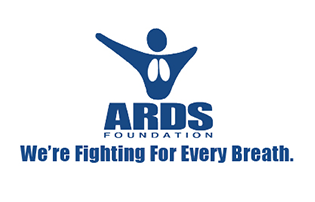By Eileen Rubin Zacharias
November 1, 2002
Yesterday, I met with my pulmonologist, Dr. Arvey Stone. Dr. Stone is one of my favorite doctors. The first time I clearly saw his face was when I was the morning after emerging from days of a hospital psychosis (psychotic episode) caused in part from a too rapid morphine withdrawal combined with moving me simultaneously to a private room on the respiratory floor almost immediately when they had taken me off the paralytics. All I had heard about him was that he was one of those Dr. Doom and Gloom docs but I knew that he was one of the good guys! You see, us coma patients take so much in, even if it does not seem like it. So, when he told me almost casually, in one of my appointments maybe a year later that I almost died at least five times when he was on call, I must have known that he was in there, fighting for me, tooth and nail. And I always sensed he had that gallows humor, something that I, as a former prosecutor, still retain.
Anyway, Dr. Stone is still my pulmonologist and one of my favorites. And when we viewed my recent x-ray together, I asked him how bad my lung scarring was. As an ARDS/sepsis patient who was on the vent for eight weeks, in the hospital for nine, I assumed that I would still retain much permanent scarring. During my hospitalization, both of my lungs had collapsed on two separate occasions and I required five chest tubes in all.
I was also one of those patients who the doctors initially held out no hope; the hospital had called the family together, with all the required participants from the hospital to have the “meeting” where they could discuss the “options.” My family decided to wait it out. And though it seems I suffered almost every complication, all of those same doctors who once held out no hope, were now my biggest cheerleaders. “You are going to walk out of this hospital” they would say, over and over again. At times, I did not believe them, and were it not for the nurses, the therapists, family, friends, and those doctors, I probably would not have. When I finally was able to walk pass the nurses station, albeit being bagged by my PT, walked by my nurse, those at the station cheered. Just the thought still brings a tear to my eye.
So, back to my x-ray, seven years post ARDS. “Clear, to the untrained eye…” Dr. Stone told me. Pretty amazing. Oh, and that PFT of mine. The first time I took it three months post ARDS was low/normal, high/low, but the second time I took it, a year later, it was about 90% of what normal would be for someone my age.
I don’t tell you this to gloat. I do huff and puff when I overexert myself…I seem to have exercise induced asthma. The extreme temperatures (hot or cold) will still cause me difficulty breathing. Climbing stairs are still harder.
I tell you this because when I got out of the hospital, in 1995, I was told that the progress that I made in the three to six months post ARDS, would be the progress that I would have for the rest of my life. But just as we offer hope to those with loved ones in crisis, I am saying that there is still hope that in time, things might get better with your breathing and your lungs. And people should keep striving to reach the goals that they have made for themselves in terms of their recovery and not be bound by the limitations set by what others may have told them. When I left the hospital on August 4, 1995, no one was offering me things like pulmonary rehab and other options to increase my lung capacity, too. Take advantage of these options and see just how far you can soar.




